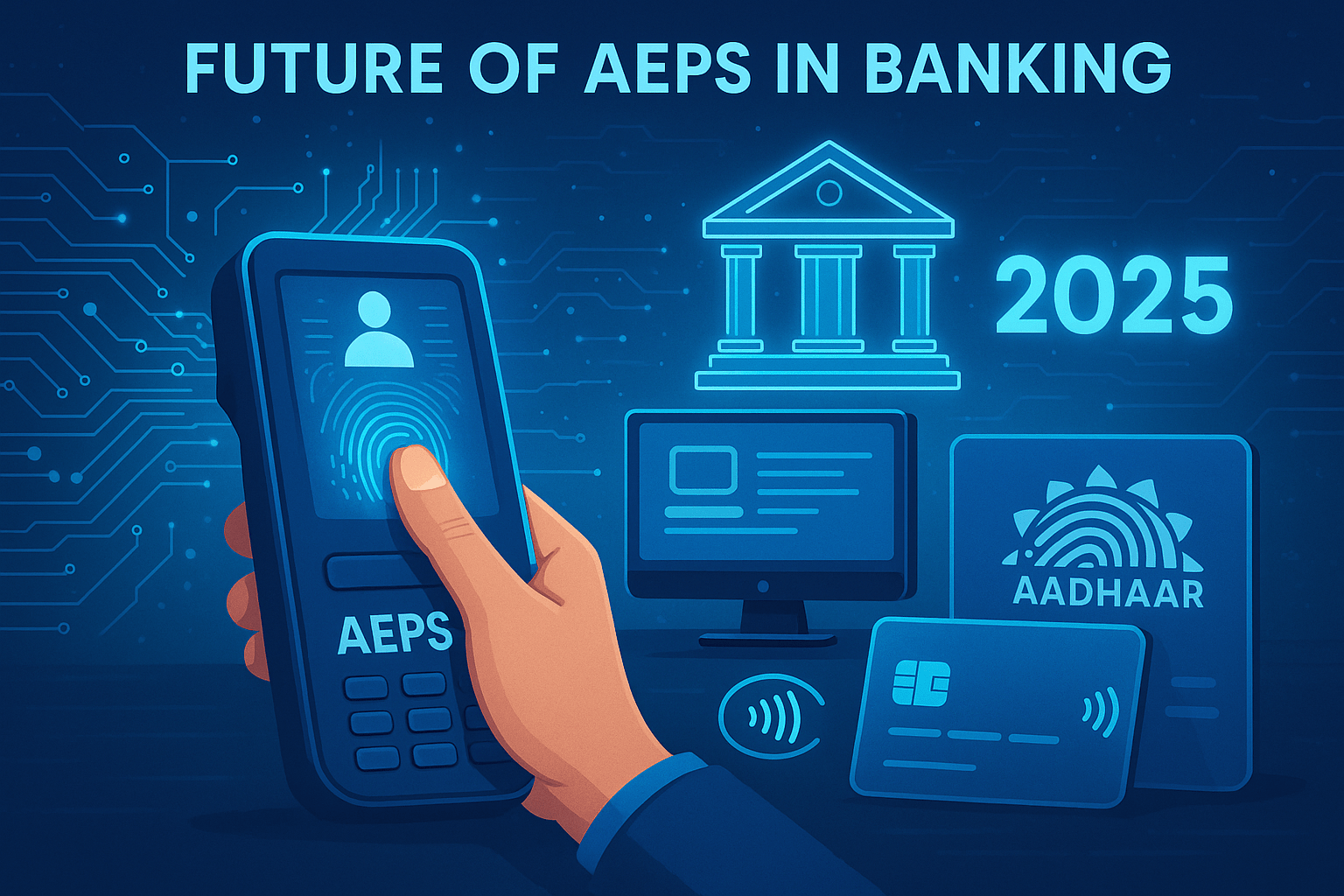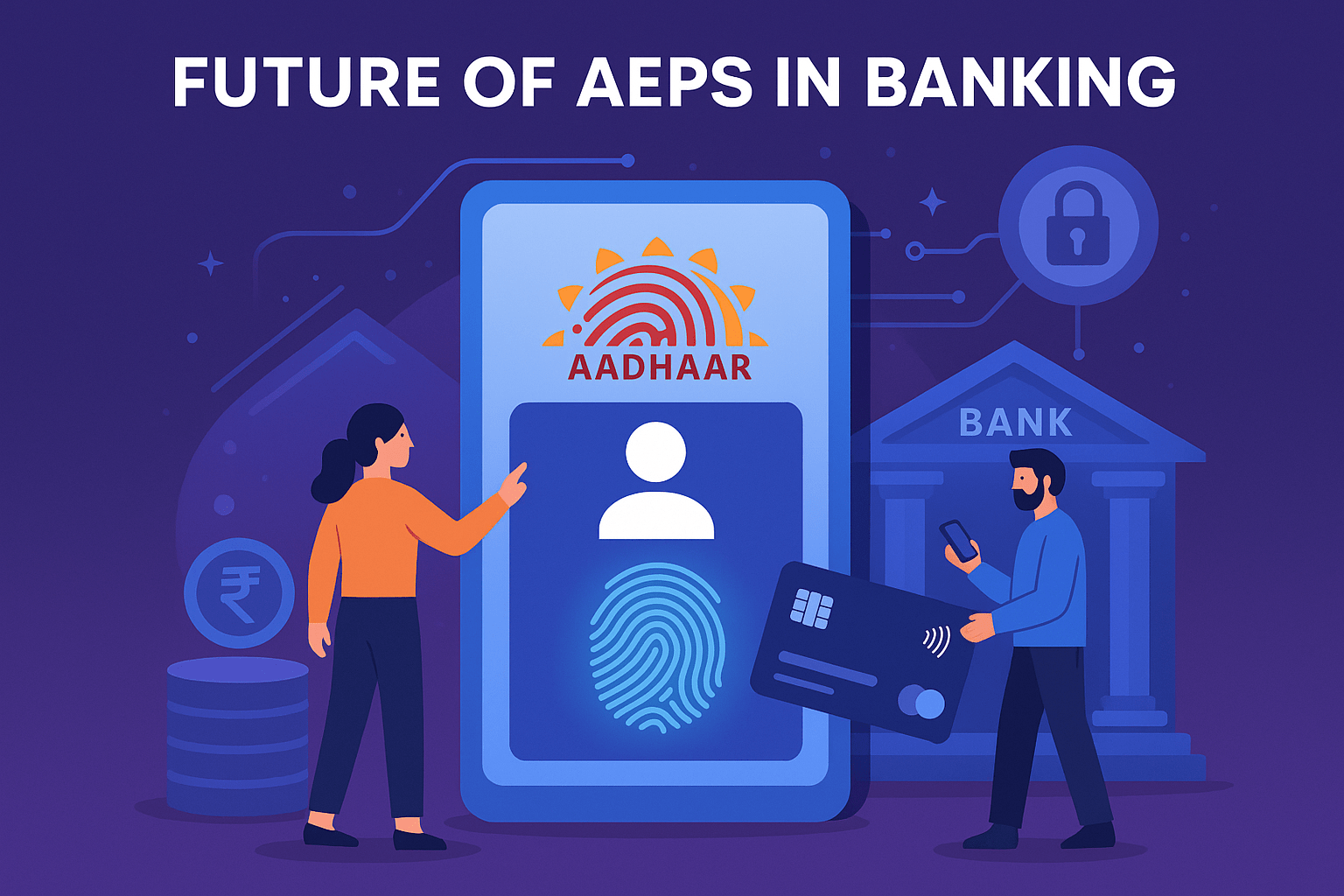For millions of Indians, especially in (Future of AEPS in Banking) rural and semi-urban areas, the Aadhaar Enabled Payment System (AEPS) has been nothing short of a financial revolution. It democratized banking by allowing basic transactions with just an Aadhaar number and a fingerprint. But technology never stands still. As we speed toward 2025, the future of AEPS in banking is poised for a massive transformation. This isn’t just about incremental updates; it’s about a fundamental evolution that will make AEPS more powerful, secure, and integrated than ever before.
So, what exactly is going to change? Let’s dive into the five key shifts that will redefine the AEPS landscape.
https://example.com/image-of-woman-using-biometric-scanner-at-micro-atm.jpg
Alt Text: The future of AEPS in banking includes advanced biometric authentication and UPI integration on micro-ATM devices.
1. The Mega-Integration: AEPS Meets UPI
This is arguably the most significant change on the horizon. Currently, AEPS and UPI (Unified Payments Interface) operate as parallel, largely separate systems. AEPS is biometric-based and bank-centric, while UPI is PIN-based and app-centric.
By 2025, we will see these two giants converge. The National Payments Corporation of India (NPCI) is already working on allowing UPI transactions on micro-ATM devices using Aadhaar-based authentication.
What this means for you:
-
One Device, Endless Possibilities: Your local kirana store owner with a micro-ATM will not only be able to dispense cash via AEPS but also allow you to pay your electricity bill, book a train ticket, or send money to a friend directly via UPI—all on the same device.
-
Bridging the Digital Divide: This integration will bring the vast UPI merchant ecosystem to the doorstep of the less tech-savvy population. They can access UPI’s services without needing a smartphone or navigating a complex app, using only their Aadhaar and fingerprint.

2. Biometrics 2.0: Beyond the Fingerprint
While fingerprint authentication has been the bedrock of AEPS, it has its limitations. Worn-out fingerprints from manual labor, scanner errors, and hygiene concerns (especially post-pandemic) have highlighted the need for more robust solutions.
The future of AEPS in banking will be built on multi-modal biometrics.
What this means for you:
-
Iris Scanners: Expect to see micro-ATMs equipped with iris recognition technology. It’s more reliable than fingerprints in many scenarios and offers a contactless experience.
-
Facial Recognition: With the increasing power of affordable cameras, facial authentication could become a standard feature. A simple look at the device could authenticate a transaction.
-
Voice Authentication: For added security or for those with physical disabilities, voice-based commands could become a viable option.
This shift to multi-modal biometrics will drastically reduce transaction failures and make AEPS more inclusive.
3. Fort Knox Security: Enhanced Fraud Prevention
As AEPS usage grows, it becomes a more attractive target for bad actors. The current ecosystem has faced challenges with fingerprint spoofing and fraudulent BC agents.
By 2025, security will be supercharged through AI and Machine Learning.
What this means for you:
-
AI-Powered Anomaly Detection: Systems will analyze transaction patterns in real-time. If a withdrawal attempt is made from a village in Maharashtra and then, improbably, 30 minutes later from a device in Rajasthan, the system will automatically flag and block it.
-
Liveness Detection: New biometric scanners will be able to distinguish between a real human finger and a silicone replica or a photographed iris, effectively preventing spoofing attacks.
-
Behavioral Biometrics: The system might learn the typical way a user interacts with a device (typing speed, pressure, etc.) to create an additional, invisible layer of security.
4. The Micro-ATM Metamorphosis: Smarter, Cheaper, Connected
The humble micro-ATM is set for a major hardware and software glow-up. Future devices will be more than just payment terminals; they will be full-service banking kiosks.
What this means for you:
-
Android-Powered Smart Devices: Gone will be the clunky devices with monochrome screens. They will be replaced by affordable, Android-based tablets with intuitive interfaces, making it easier for Business Correspondents (BCs) to navigate and offer more services.
-
Offline-First Functionality: Recognizing the patchy internet connectivity in remote areas, new devices will be built to store transaction data securely and sync it with the bank’s servers once a connection is reestablished, ensuring uninterrupted service.
-
Value-Added Services: Beyond cash withdrawal and deposit, these devices will facilitate Aadhaar seeding, insurance product distribution, and even provide government scheme information.

5. The Data Revolution: From Transactions to Financial Inclusion Insights
Every AEPS transaction generates valuable data. Currently, this data is primarily used for settlement. In the future, with proper anonymization and privacy safeguards, this data will become a powerful tool for financial inclusion.
What this means for you:
-
Hyper-Local Credit Scoring: Banks can analyze transaction patterns in a specific region to assess the creditworthiness of small business owners and farmers who have no formal credit history. This can lead to the disbursement of small-ticket loans tailored to their cash flows.
-
Policy Making: The government can use aggregated data to understand the economic activity in remote blocks, identify regions with low banking penetration, and tailor their welfare schemes accordingly.
-
Personalized Products: Banks can design micro-insurance or micro-pension products that are affordable and relevant to the needs of the AEPS user base.
Conclusion: AEPS is Not Fading, It’s Evolving
The narrative that UPI will replace AEPS is a misconception. Instead, 2025 will be about synergy. The future of AEPS in banking is not about existing in isolation but about becoming the biometric bridge that connects India’s vast population to the sophisticated digital economy.
It will evolve from a cash-disbursement mechanism to a comprehensive, secure, and intelligent platform that truly fulfills the promise of financial inclusion for all. The changes coming are profound, and they promise to make banking simpler, safer, and more accessible for every Indian.
Frequently Asked Questions (FAQs)
1. Is AEPS being phased out because of UPI?
No, absolutely not. Instead, AEPS and UPI are integrating. Think of AEPS as providing the biometric authentication layer that will allow people without smartphones to access the UPI network through micro-ATMs. They are becoming complementary, not competitive.
2. Is AEPS safe? What about the risk of fingerprint theft?
The current AEPS system is secure and uses encrypted data transmission. However, the future upgrades focused on liveness detection (to prevent spoofing) and AI-powered fraud monitoring are specifically designed to address these concerns and make it even more secure by 2025.
3. Will I need a new Aadhaar card or need to update my biometrics for these new features?
For the enhanced features like iris or facial recognition, you may need to visit an Aadhaar enrolment center to update your biometrics if you haven’t already provided them. However, your existing Aadhaar number and fingerprint data will continue to work for basic AEPS services.
4. What happens if the internet is down? Will I still be able to use AEPS?
Yes! A key focus for the future is developing “offline-first” micro-ATM devices. These devices will be able to store transaction data securely when there’s no internet and automatically sync with the bank once the connection is restored, ensuring you are never stranded without access to your money.
5. How will these changes affect Business Correspondents (BCs) or Bank Mitras?
The changes will empower BCs significantly. They will be able to offer a much wider range of services (UPI, bill payments, insurance) from a single, user-friendly device. This will increase their footfall, commission earnings, and their role as crucial financial touchpoints in their communities.
Disclaimer: This article is for educational and informational purposes only. The views expressed are based on current technological trends and publicly available roadmaps from institutions like the NPCI. The actual implementation and features of AEPS by 2025 may vary. While every effort has been made to ensure the accuracy of the information, we make no guarantees regarding its completeness or reliability. If you have any concerns about the content published here, please visit our DMCA page for guidance on content removal. Please verify any specific details or claims with official banking sources before making financial decisions.
